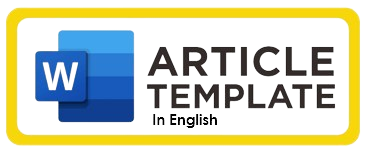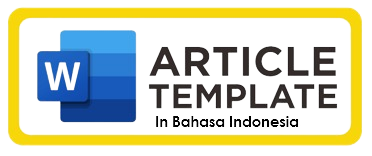Improving the Knowledge of Akidah (Faith in the Last Day) of Elementary School Students through Audio Visual Learning Videos
DOI:
https://doi.org/10.64420/ijris.v1i1.87Keywords:
Knowledge of akidah; Audio visual learning video; StudentsAbstract
The main task and responsibility of a teacher is to create effective, efficient, creative, dynamic and fun learning. The purpose of this study was to determine the increase in knowledge of Akidah (Faith in the Last Day) SDN O2 Ipuh through audio visual learning videos. The type of research used is Classroom Action Research. The research was conducted at SDN 02 Ipuh in 2023, the research sample was class V students totaling 19 students. Data collection techniques in this study were obtained through observation and field data records, test results and notes on reflection/discussion results. Data analysis techniques used by researchers include (1) data collection; (2) verification / conclusion drawing; (3) data reduction. The results of the study obtained the conclusion that the use of teaching videos can increase can increase students' knowledge of akidah (faith in the last day). there are three factors that show the tendency that student learning activeness in the learning process is still low. First, students lack the courage to express their opinions to others. Second, students lack the ability to formulate their own debate. Third, students are not accustomed to competing in expressing opinions with other friends
References
Aisyah, R. E., Nurwahyudi, N., & Layyinatussifa, U. (2022). Penerapan Strategi Pembelajaran Beserta Pola Pengembangan Pendidikan Agama Islam Sekolah Dasar Negeri. Jurnal Kajian Pendidikan Islam, 210-219. https://doi.org/10.58561/jkpi.v1i2.37
Aliansyah, M. U., Mubarok, H., Maimunah, S., & Hamdiah, M. (2021). Pengaruh Media Pembelajaran Berbasis Audio Visual Terhadap Minat Belajar Siswa Di Pesantren Ainul Hasan. Jurnal Fusion, 1(07), 119-124. https://doi.org/10.54543/fusion.v1i07.28
Amaliah, R. R., Fadhil, A., & Narulita, S. (2014). Penerapan metode ceramah dan diskusi dalam meningkatkan hasil belajar PAI di SMA Negeri 44 Jakarta. Jurnal Studi Al-Qur'an, 10(2), 119-131. https://journal.unj.ac.id/unj/index.php/jsq/article/view/4441
Ananda, R. (2017). Penggunaan media audio visual untuk meningkatkan hasil belajar pendidikan kewarganegaraan siswa kelas IV SD Negeri 016 Bangkinang Kota. Jurnal Basicedu, 1(1), 21-30. https://doi.org/10.31004/basicedu.v1i1.149
Firdaus, I., Hidayati, R., Hamidah, R. S., Rianti, R., & Khotimah, R. C. K. (2023). Model-Model Pengumpulan Data dalam Penelitian Tindakan Kelas. Jurnal Kreativitas Mahasiswa, 1(2), 105-113. https://riset-iaid.net/index.php/jpm/article/view/1443
Kholik, A. (2022). Upaya Peningkatan Hasil Belajar Melalui Metode Sharing Dan Media Audio Visual Materi Iman Pada Hari Akhir Siswa Kelas XII. Ipa-2 SMA Negeri 1 Margasari Kabupaten Tegal Semester 1 tahun pelajaran 2017/2018: Array. Dialektika Jurnal Pemikiran dan Penelitian Pendidikan Dasar, 12(1), 822-822. https://doi.org/10.58436/jdpgsd.v12i1.987
Kholik, A. (2022). Upaya peningkatan hasil belajar melalui metode sharing dan media audio visual materi iman pada hari akhir siswa kelas xii. Ipa-2 SMA-negeri 1 margasari kabupaten tegal semester 1 tahun pelajaran 2017/2018: Array. Dialektika Jurnal Pemikiran dan Penelitian Pendidikan Dasar, 12(1), 822-822. https://doi.org/10.58436/jdpgsd.v12i1.987
Nardawati, N. (2020). Upaya Meningkatkan Hasil Belajar Siswa Pada Materi Iman Kepada Hari Akhir Dengan Metode Numbered Head Together Di kelas VI SD Dendang. Jurnal Literasiologi, 4(1). https://jurnal.literasikitaindonesia.com/index.php/literasiologi/article/view/129/148
Nurjanatin, N. (2021). Penerapan Model Problem Based Learning untuk Meningkatkan Aktifitas dan Hasil Belajar Pendidikan Agama Islam Siswa. Syntax Idea, 3(8), 1937-1946. https://doi.org/10.46799/syntax-idea.v3i8.1413
Parwoto, P. (2018). Pembelajaran Direct Instruction Dengan Metode Eksperimen Untuk Meningkatkan Kemampuan Membaca Grafik Pada Siswa kelas X. 6 SMAN 1 Kedamean-Gresik. Didaktika: Jurnal Pemikiran Pendidikan, 22(2), 176-183. https://journal.umg.ac.id/index.php/didaktika/article/view/224
Prihantoro, A., & Hidayat, F. (2019). Melakukan penelitian tindakan kelas. Ulumuddin: Jurnal Ilmu-ilmu Keislaman, 9(1), 49-60. https://doi.org/10.47200/ulumuddin.v9i1.283
Selamet, I. K. (2020). Penggunaan Media Visual untuk Meningkatkan Hasil Belajar Mata Pelajaran IPS Siswa Kelas V SD Inpres Tumpu Jaya I. Jurnal Paedagogy, 7(2), 121-125. https://doi.org/10.33394/jp.v7i2.2505
Susilowati, D. (2018). Penelitian Tindakan Kelas (PTK) solusi alternatif problematika pembelajaran. Jurnal ilmiah edunomika, 2(01). http://dx.doi.org/10.29040/jie.v2i01.175
Warsono, S. (2016). Pengelolaan kelas dalam meningkatkan belajar siswa. Manajer Pendidikan: Jurnal Ilmiah Manajemen Pendidikan Program Pascasarjana, 10(5). https://doi.org/10.33369/mapen.v10i5.1298
Yuhana, A. N., & Aminy, F. A. (2019). Optimalisasi peran guru pendidikan agama Islam sebagai konselor dalam mengatasi masalah belajar siswa. Jurnal Penelitian Pendidikan Islam,[SL], 7(1), 79-96. https://doi.org/10.36667/jppi.v7i1.357
Downloads
Published
How to Cite
Issue
Section
License
Copyright (c) 2025 Emilia Tri Puspita Mariani

This work is licensed under a Creative Commons Attribution-ShareAlike 4.0 International License.
Authors who publish with this journal agree to the following terms: (1) Authors retain copyright and grant the journal right of first publication with the work simultaneously licensed under a Creative Commons Attribution-ShareAlike 4.0 International. that allows others to share the work with an acknowledgement of the work's authorship and initial publication in this journal; (2) Authors are able to enter into separate, additional contractual arrangements for the non-exclusive distribution of the journal's published version of the work (e.g., post it to an institutional repository or publish it in a book), with an acknowledgement of its initial publication in this journal; (3) Authors are permitted and encouraged to post their work online (e.g., in institutional repositories or on their website) prior to and during the submission process, as it can lead to productive exchanges, as well as earlier and greater citation of published work.




